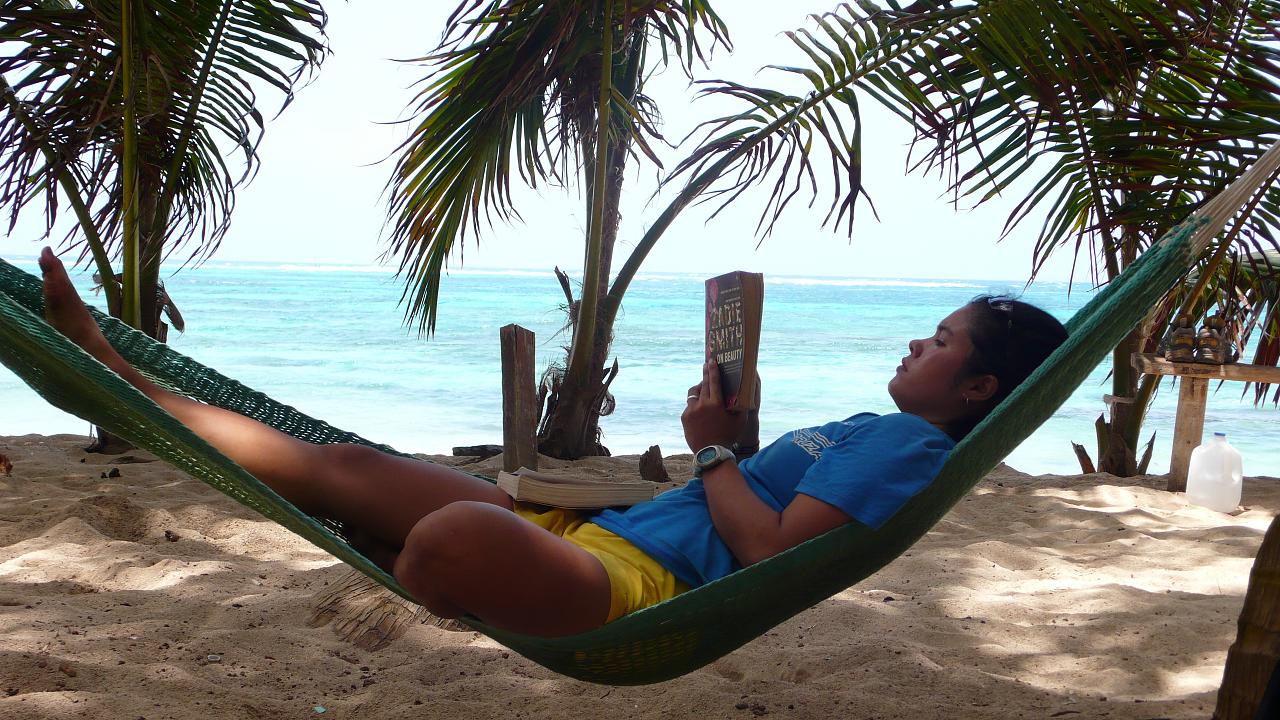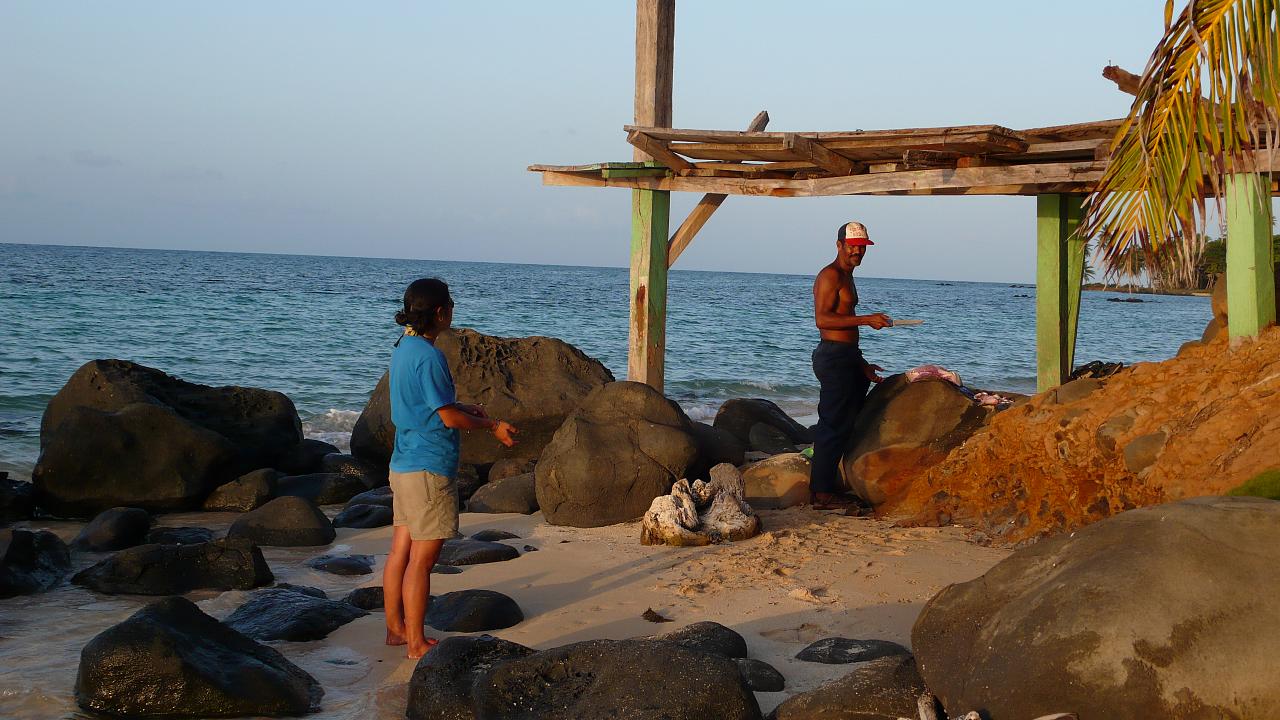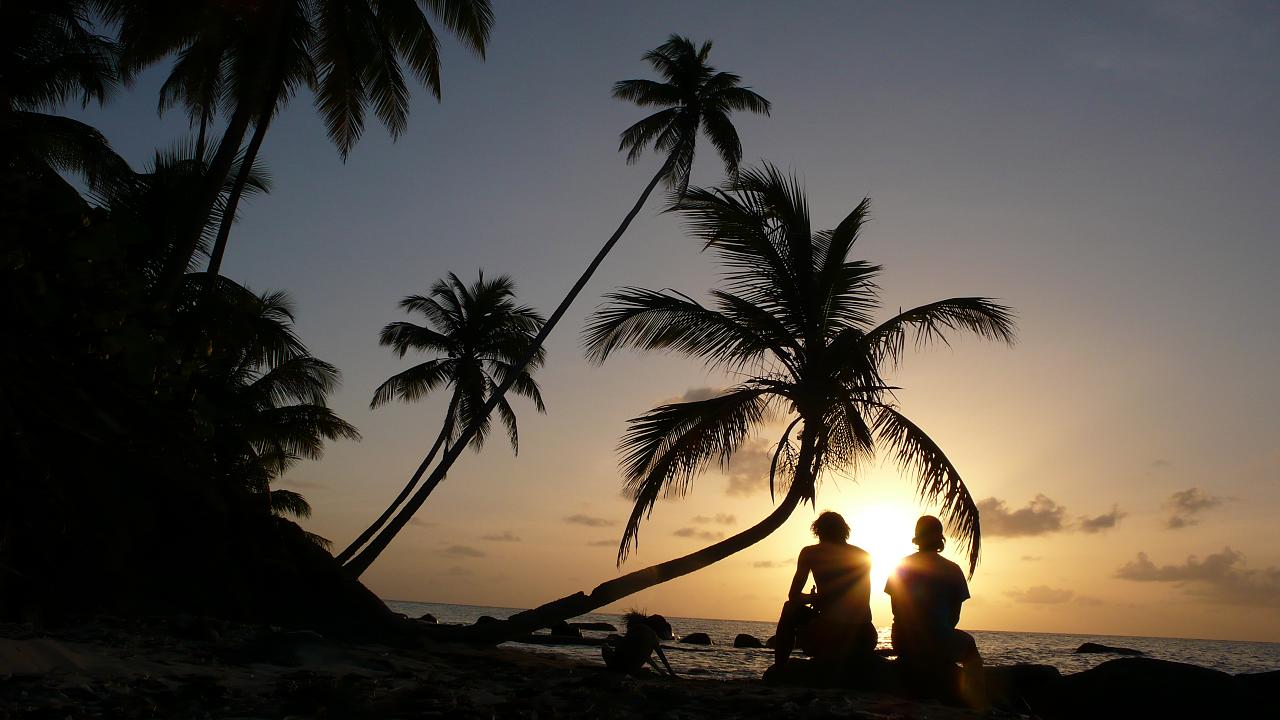 We arrived into San Carlos, Nicaragua at 5 am just in time to see the sun rise over the Rio San Juan. It had been a smooth ride, but we had gotten little sleep-- the old school Sylvester Stallone movies dubbed in Spanish didn't help. We found a hotel room at 6 am, ate breakfast, and set out on a walkabout around the town. It had a bit of a border town feeling, but was nice enough. Leah wasn't feeling well, so she slept for a good part of the afternoon and evening and I dined alone in the bus station "food court" (a bunch of people yelling at you, "What do you want my love? Come here, we have what you need.") As soon as you pick a place, their heads turn, arms go down and their eyes search out the next hungry victim. I ordered gallo pinto and huevos (beans and rice mixed with eggs on the side) and the young girls next to me shyly tried out their English on me as I ate. On my way back to the hotel I stopped to buy some baby wipes (aka showers when we have no other option) and got a 30 minute lecture from the store clerk with his bible in hand about how I need to return to the bible and subsequently Jesus. He asked if he could give me a bible and I told him that I travel on bike and don't have space. He tried to tell me they are plenty small, so I told him I can get them for free when I get home. I went back to the hotel and joined Leah in slumber. After 3 hours I woke up with a bloated belly...uh oh. I took myself outside to the railing over the river, stuck my finger in my mouth and pulled the trigger. Gallo pinto and huevos hit the water in the moonlight and I watched the little fish go nuts on a midnight snack. I didn't feel any better in the morning and my appetite was gone. We caught the 10:30 am boat that took us from San Carlos, Nicaragua to Los Chiles, Costa Rica via the Rio Frio-- we were leaving Nicaragua for good.
We arrived into San Carlos, Nicaragua at 5 am just in time to see the sun rise over the Rio San Juan. It had been a smooth ride, but we had gotten little sleep-- the old school Sylvester Stallone movies dubbed in Spanish didn't help. We found a hotel room at 6 am, ate breakfast, and set out on a walkabout around the town. It had a bit of a border town feeling, but was nice enough. Leah wasn't feeling well, so she slept for a good part of the afternoon and evening and I dined alone in the bus station "food court" (a bunch of people yelling at you, "What do you want my love? Come here, we have what you need.") As soon as you pick a place, their heads turn, arms go down and their eyes search out the next hungry victim. I ordered gallo pinto and huevos (beans and rice mixed with eggs on the side) and the young girls next to me shyly tried out their English on me as I ate. On my way back to the hotel I stopped to buy some baby wipes (aka showers when we have no other option) and got a 30 minute lecture from the store clerk with his bible in hand about how I need to return to the bible and subsequently Jesus. He asked if he could give me a bible and I told him that I travel on bike and don't have space. He tried to tell me they are plenty small, so I told him I can get them for free when I get home. I went back to the hotel and joined Leah in slumber. After 3 hours I woke up with a bloated belly...uh oh. I took myself outside to the railing over the river, stuck my finger in my mouth and pulled the trigger. Gallo pinto and huevos hit the water in the moonlight and I watched the little fish go nuts on a midnight snack. I didn't feel any better in the morning and my appetite was gone. We caught the 10:30 am boat that took us from San Carlos, Nicaragua to Los Chiles, Costa Rica via the Rio Frio-- we were leaving Nicaragua for good.saw a bull shark fin (the only type of freshwater shark in the world and it lives in Lake Nicaragua). Once we entered Costa Rica we started seeing another kind of life we hadn't seen since Belize, conventional tourists. They were on tours of the river and we were quite shocked
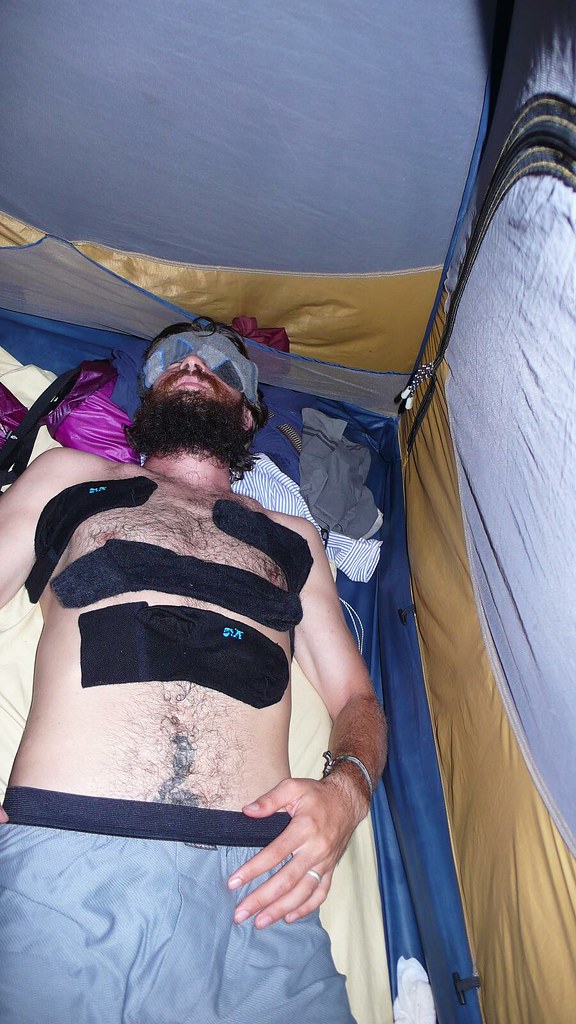 by how many we saw in this out of the way place in the low season. We arrived in Los Chiles, Costa Rica, got our passports stamped, and made for Upala via a dirt road "shortcut" throughAlong the river we saw some crocodiles, caiman, many river birds, howler monkeys, and I even the Caño Negro wildlife refuge. After about 30 km of very loose rocky road, I had to stop. I wasn't feeling well at all. We found a house with a yard to camp at and I went to bed without dinner. I hardly slept, donning a fever throughout the night and waking up sweat drenched (despite the cold wet socks and tylenol dose after dose). In the morning, the diarrhea hit-- it was on. We set our sights for Upala and got a hotel room where we holed up for the next couple of nights. Leah took care of me during my high fevers and in between running to the bathroom. Finally, after two days of fevers, she decided it was time to break out the secret weapon from our arsenal a.k.a. pharmacy-- the antibiotics. Meanwhile, Leah being Leah was praying that the antibiotics would work, thereby quelling her fear that I had dengue or the big M, malaria that is. Just a couple of hours later I started feeling much better and in the morning I had my appetite back. After one more day of rest, we decided that even more therapeutic than a "habitacion con ventilador" in Upala (although it was a nice town and we didn't see another gringo there) would be the hot springs near Volcan Miravalles.
by how many we saw in this out of the way place in the low season. We arrived in Los Chiles, Costa Rica, got our passports stamped, and made for Upala via a dirt road "shortcut" throughAlong the river we saw some crocodiles, caiman, many river birds, howler monkeys, and I even the Caño Negro wildlife refuge. After about 30 km of very loose rocky road, I had to stop. I wasn't feeling well at all. We found a house with a yard to camp at and I went to bed without dinner. I hardly slept, donning a fever throughout the night and waking up sweat drenched (despite the cold wet socks and tylenol dose after dose). In the morning, the diarrhea hit-- it was on. We set our sights for Upala and got a hotel room where we holed up for the next couple of nights. Leah took care of me during my high fevers and in between running to the bathroom. Finally, after two days of fevers, she decided it was time to break out the secret weapon from our arsenal a.k.a. pharmacy-- the antibiotics. Meanwhile, Leah being Leah was praying that the antibiotics would work, thereby quelling her fear that I had dengue or the big M, malaria that is. Just a couple of hours later I started feeling much better and in the morning I had my appetite back. After one more day of rest, we decided that even more therapeutic than a "habitacion con ventilador" in Upala (although it was a nice town and we didn't see another gringo there) would be the hot springs near Volcan Miravalles.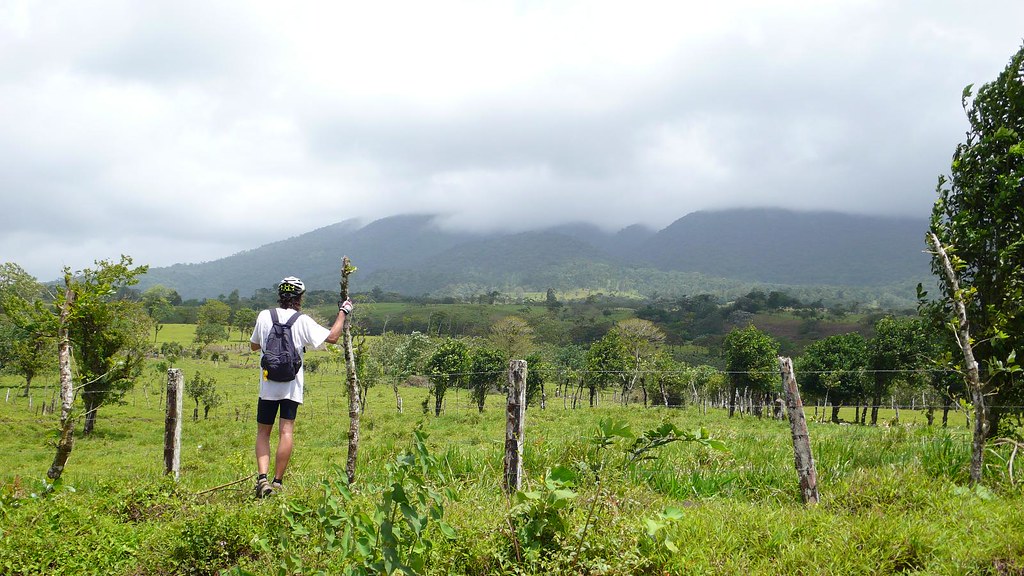 The 50 km ride took us on dirt road out of the Northern lowlands and into the Cordillera de Guanacaste (Guanacaste mountain range). We skirted around the north and west sides of Volcan Miravalles, gaining a couple of thousand feet of elevation which wasn't easy considering we still aren't back in pre-Managua climbing shape. At the peak of our climb in Armenia, we met a man who shared some agua manzanas (water or mountain apples) with us and a woman staring at us from a nearby store followed his lead and provided us with some much appreciated refreshement in the form of more agua manzanas. We rode toward Aguas Claras enjoying the mountain roads and vistas. We were in the land of fincas (small farms or ranches)
The 50 km ride took us on dirt road out of the Northern lowlands and into the Cordillera de Guanacaste (Guanacaste mountain range). We skirted around the north and west sides of Volcan Miravalles, gaining a couple of thousand feet of elevation which wasn't easy considering we still aren't back in pre-Managua climbing shape. At the peak of our climb in Armenia, we met a man who shared some agua manzanas (water or mountain apples) with us and a woman staring at us from a nearby store followed his lead and provided us with some much appreciated refreshement in the form of more agua manzanas. We rode toward Aguas Claras enjoying the mountain roads and vistas. We were in the land of fincas (small farms or ranches)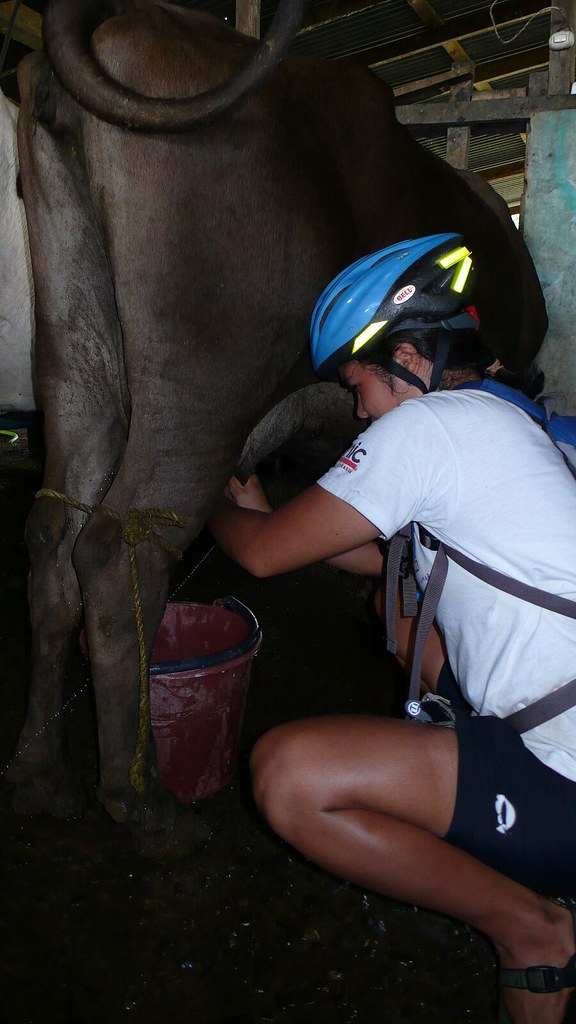 and as we passed one dairy, I noticed they were milking so we stopped to have a look. We met Elfin, the owner, and he told us about their family farm. They had 35 milking cows and sold their milk to Dos Pinos, the largest seller of dairy products in Costa Rica and other parts of Central America as well (ice cream, cheese, milk, cream, you name it, if it's from a cow, they sell it). It was really neat to find out that such a large corporation buys primarily from small farmers. Hopefully not just a romantic concept. He proudly showed us around his barn (including the wild "forest turkeys" that had taken up residence) and how his milking operation worked with the machines. I asked him if we could try it "a mano" (by hand) and he smiled. He found us a good cow (long teets- easier milking) and he showed us how to do it. It looked easy and I squatted down with confidence. My first squirt had 1/4 the power of Elfin's, not to mention I missed the bucket. The subsequent three tries were a repeat-- man I really suck at this. Finally, I hit the bucket twice in a row and then missed again. I felt bad wasting the milk and gave Leah a shot. Leah was better than me and hit the bucket every time minus the time she squirted me on purpose. Elfin took over and showed us how it was done. His squirts had the power of a super soaker and the accuracy of a summer water fight sniper. When he was
and as we passed one dairy, I noticed they were milking so we stopped to have a look. We met Elfin, the owner, and he told us about their family farm. They had 35 milking cows and sold their milk to Dos Pinos, the largest seller of dairy products in Costa Rica and other parts of Central America as well (ice cream, cheese, milk, cream, you name it, if it's from a cow, they sell it). It was really neat to find out that such a large corporation buys primarily from small farmers. Hopefully not just a romantic concept. He proudly showed us around his barn (including the wild "forest turkeys" that had taken up residence) and how his milking operation worked with the machines. I asked him if we could try it "a mano" (by hand) and he smiled. He found us a good cow (long teets- easier milking) and he showed us how to do it. It looked easy and I squatted down with confidence. My first squirt had 1/4 the power of Elfin's, not to mention I missed the bucket. The subsequent three tries were a repeat-- man I really suck at this. Finally, I hit the bucket twice in a row and then missed again. I felt bad wasting the milk and gave Leah a shot. Leah was better than me and hit the bucket every time minus the time she squirted me on purpose. Elfin took over and showed us how it was done. His squirts had the power of a super soaker and the accuracy of a summer water fight sniper. When he was finished, he filled up a glass with the milk we had just "made" and gave it to us to try. It was frothy, creamy, thick, sweet, warm, and delicious! Leah said something interesting, "This sounds stupid, but I'm actually amazed this tastes like milk." We said goodbye and when I shook his hand it was obvious that he had milked a lot of cows, he was STRONG.
finished, he filled up a glass with the milk we had just "made" and gave it to us to try. It was frothy, creamy, thick, sweet, warm, and delicious! Leah said something interesting, "This sounds stupid, but I'm actually amazed this tastes like milk." We said goodbye and when I shook his hand it was obvious that he had milked a lot of cows, he was STRONG.After leaving the dairy, were we aching for some hot springs action. Finally we arrived at the hot springs and thought we had died and gone to heaven. There were three pools, warm, warmer, and hot-- there was even a water slide if you were feeling too relaxed. The price was right and the camping was free! This was a place where only locals go-- tranquilo and with great vibes. Every person we talked to explained how nice and safe the area was and how there were never problems there. We finally felt relaxed after the antics of the wild west (a.k.a Nicaragua and Honduras) and let out a big sigh of relief. The pools felt great and we found a place to camp away from all the excitement (really there was hardly anyone there), off in a corner and across from the warm stream. We slept like babies that first night and got up early the next morning and hit the water, followed by a full day of relaxing, card playing, reading, and talking with the locals with not another tourist in sight. This was not the Costa Rica we had anticipated as everyone kept telling us how overrun with tourists the country is, a nice surprise.
That night I cleaned up after dinner and loosely put things away. Everything was under shelter
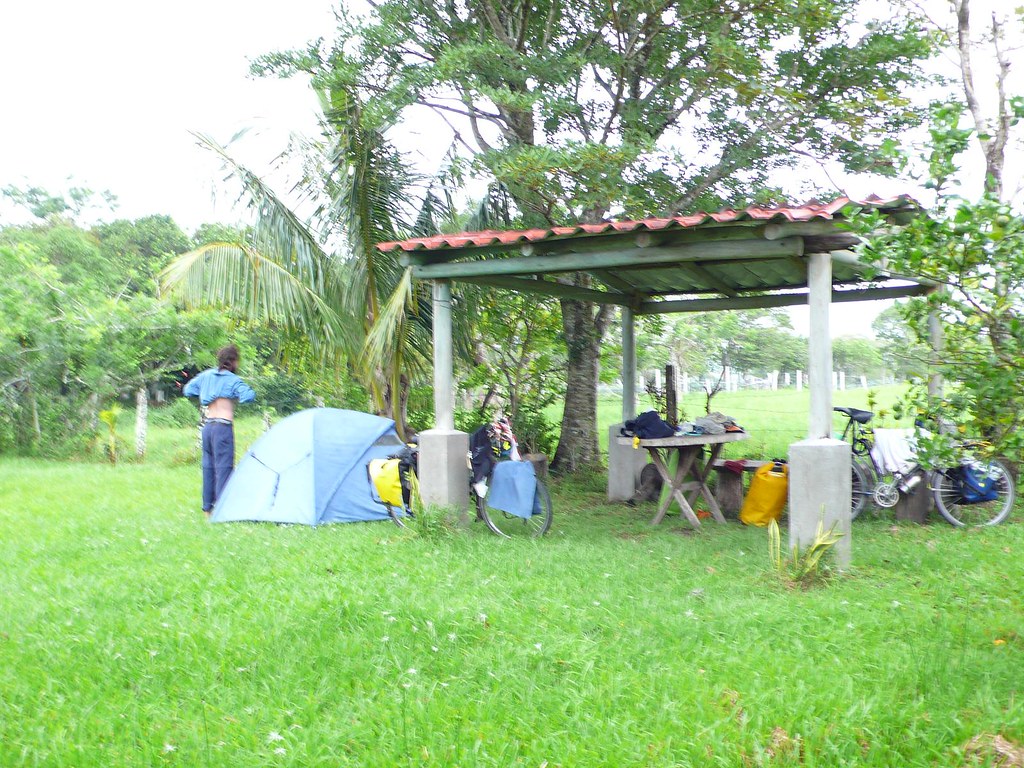 and the according to everyone the area was safe, nothing to worry about. We took almost all of our usual precautions by bringing the money belts with passports and cameras inside the tent, I didn't take my handlebar bag in as all it had were a couple of things no one would want but me anyway (ie. compass, analog altimeter, bike computer, some locks and stinky biking gloves, etc.). I joined Leah in the tent and slept soundly until midnight or so when I woke up for my usual midnight pee. After peeing, I stumbled under the shelter for some water and I noticed that my bike (10 feet away from the tent) had fallen over. Now, picture this going through my groggy brain...¨Weird,¨ I thought, ¨I didn´t hear it fall. Huh, some things fell out of the panniers. Wait a minute they weren´t open last night when I went to bed, did an animal get into them? No they would have made more noise.¨ My heart starts pounding, ¨Shit, we got ROBBED!¨ All the panniers were open, everything was taken out of them, things taken out of plastic bags and the plastic bags gone, full of the stuff they wanted. Gone is the stove, water filter-gone, Leah´s shoes, Enrique´s camelback we were borrowing, compass, altimeter, bike computer and the list goes on $1,000 long. They really must have worked up an appetite because they even had time to open and eat one of our cans of tuna and toss the empty can aside!
and the according to everyone the area was safe, nothing to worry about. We took almost all of our usual precautions by bringing the money belts with passports and cameras inside the tent, I didn't take my handlebar bag in as all it had were a couple of things no one would want but me anyway (ie. compass, analog altimeter, bike computer, some locks and stinky biking gloves, etc.). I joined Leah in the tent and slept soundly until midnight or so when I woke up for my usual midnight pee. After peeing, I stumbled under the shelter for some water and I noticed that my bike (10 feet away from the tent) had fallen over. Now, picture this going through my groggy brain...¨Weird,¨ I thought, ¨I didn´t hear it fall. Huh, some things fell out of the panniers. Wait a minute they weren´t open last night when I went to bed, did an animal get into them? No they would have made more noise.¨ My heart starts pounding, ¨Shit, we got ROBBED!¨ All the panniers were open, everything was taken out of them, things taken out of plastic bags and the plastic bags gone, full of the stuff they wanted. Gone is the stove, water filter-gone, Leah´s shoes, Enrique´s camelback we were borrowing, compass, altimeter, bike computer and the list goes on $1,000 long. They really must have worked up an appetite because they even had time to open and eat one of our cans of tuna and toss the empty can aside!I'm sure that the thief didn't even know what some of the things were, but they looked fancy enough to take. The stove is worthless to them because they left the pump and fuel bottle. The altimeter, if they figure out what it is, is in feet. The bike computer is worthless without the mount that is still on my bike and the locks that they took were combination locks. Lucky for us though, they left all of our panniers, dry bags, and bikes and most importantly left us safe and sleeping soundly. Worse than losing our stuff though, they stole our innocence and violated our space and trust, a very depressing and angering feeling. We woke the manager and told him what happened (although a little unsure if the manager was actually the thief, skeptical of everyone at this point). He was very sorry for us and we could tell it pained him (well, he told us so too). He said it was the first time anything like this had happened there. We took all of our stuff under the restaurant roof and tried to go back to sleep, awaking and looking out of the tent with every little noise, sorry that we felt we had to do so. In the morning, we took everything apart and made a list of everything that we lost and we still add to it now and then. We rode to the police station to file a report and on the way we encountered Victor, a man that we had met the day before at the hot springs who we chatted with and who kindly bought us each a drink as well. When we told him what happened, he was very sorry and embarrassed, a reaction we got from the police chief as well. "This NEVER happens here," he said. Unfortunately, this is a problem that has been on the rise here in Costa Rica for awhile and it seems that no area is impenetrable. They insisted that it must have been someone from outside of the community that had come to the hot springs and seen us there. Our bad luck persisted and the police didn't have the capacity to issue an official police report there, something we wanted just in case we could get some money from insurance. So, we checked into a hotel, stashed our bikes, and made our way to Liberia, the closest big city. However, the bus schedule didn't allow us to go there and back in the same day, so we stood outside in the rain hitchhiking until Miguel Angel picked us up and kindly delivered us to the main bus station in Bagaces, half way to Liberia. The irony did not escape us of the fact that we were hitchhiking the morning after getting robbed, but we were desperate and quite simply still had faith in the goodness of the locals (which Miguel Angel clearly reaffirmed to us). Our trip to Liberia was successful and we left the next morning with slightly higher spirits and still a warm place in our hearts for the area and locals we encountered.





